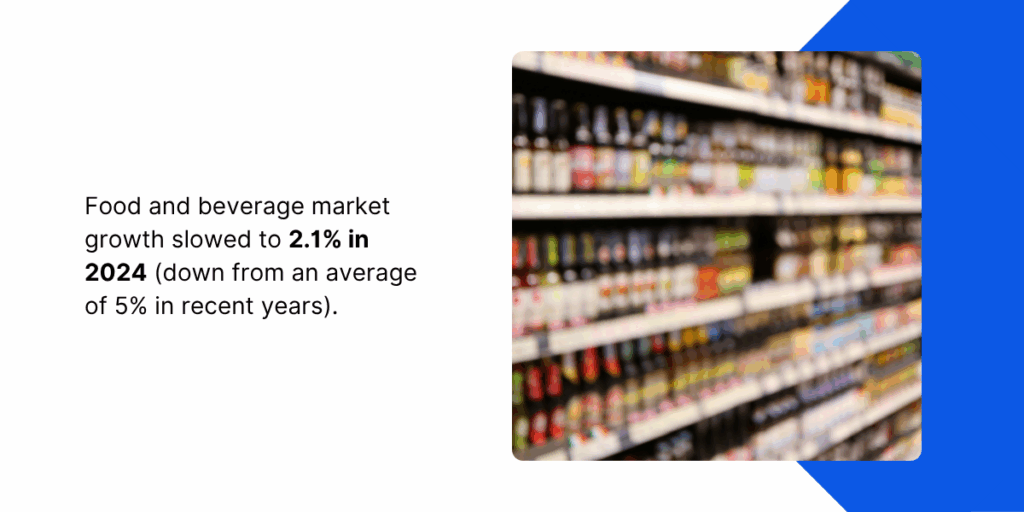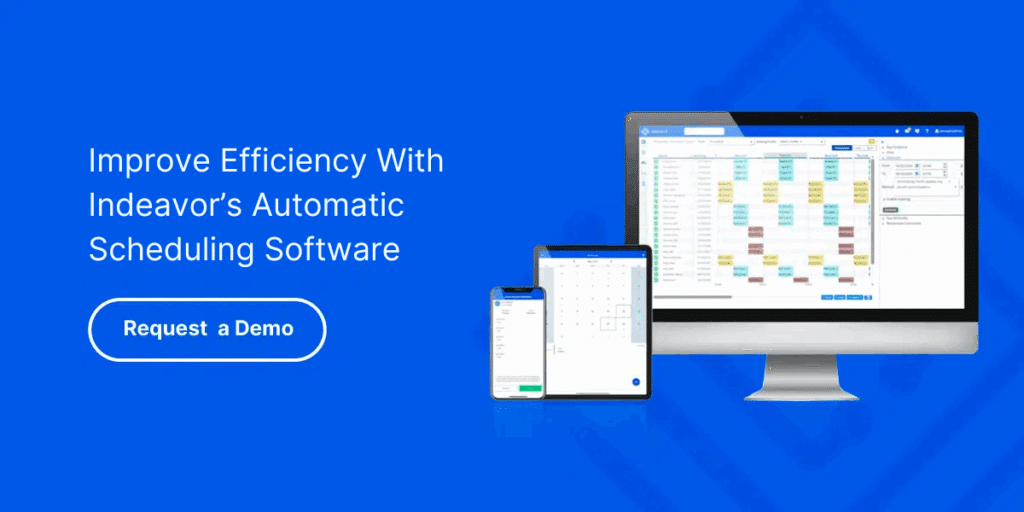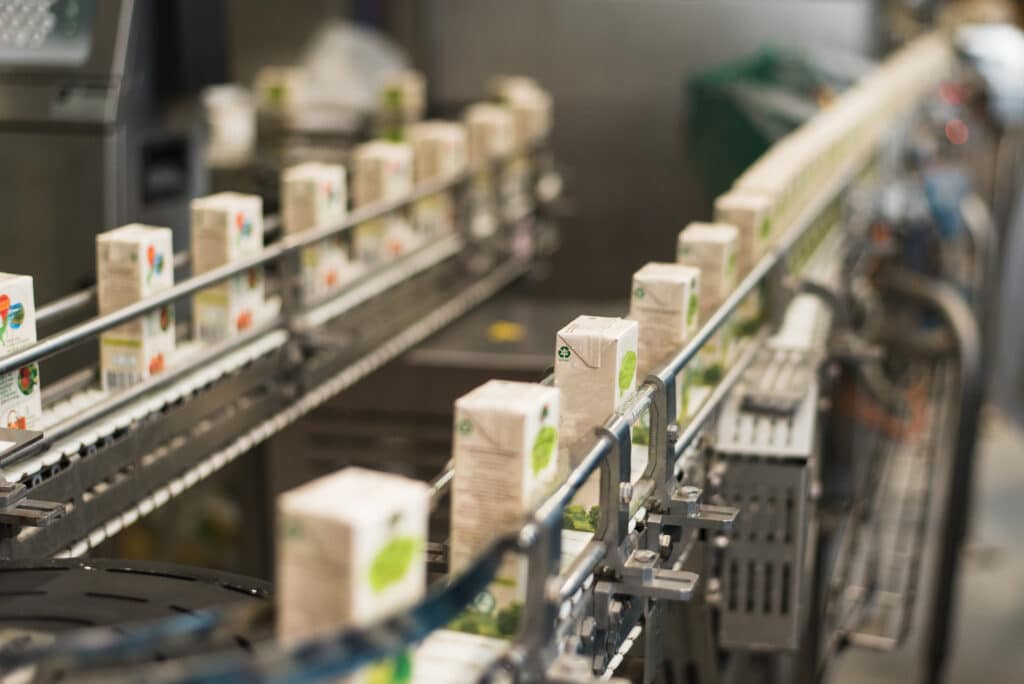For years, large consumer packaged goods (CPG) companies dominated store shelves, wielding the kind of scale and brand recognition that guaranteed market share. But the landscape has shifted. Smaller, more agile competitors are capturing consumer interest, private labels are expanding, and even historically reliable revenue streams have begun to stall. Growth is no longer a given.
To break through today’s market stagnation, CPG companies must look inward. Operational inefficiencies, especially in labor planning, are increasingly the difference between shrinking margins and sustainable profitability. While top-line growth remains elusive, cost optimization has emerged as a critical lever for CPG manufacturing companies looking to regain their competitive edge.
Why Growth Is Slowing for CPG Companies
Many CPG companies are struggling to grow, even as demand for essential goods remains relatively stable. An analysis by the Boston Consulting Group showed overall food and beverage market growth slowed to 2.1% in 2024 (down from an average of 5% in recent years). Specifically, large CPG brands (with over $1 billion in annual revenue) grew just 0.5%, while smaller and midsize brands grew at closer to 4.9%.
What’s changed? Consumer preferences have shifted toward new, niche, and often purpose-driven brands.
Meanwhile, the rise of direct-to-consumer models and contract manufacturing has lowered the barrier to entry for startups, giving them speed and flexibility that larger CPG companies often lack.
At the same time, retail partners are investing heavily in store-brand alternatives. These private labels offer comparable quality at lower prices, attracting cost-conscious consumers, especially during inflationary periods.
The result? Large, traditional CPG companies are losing shelf space and market share.

The Hidden Cost of Operational Bloat
Behind the walls of many legacy CPG companies lie bloated operational structures built for scale, not agility. These systems were designed for a time when brand loyalty was stronger, market volatility was lower, and labor was more predictable. That’s no longer the case.
Today, labor inefficiency is one of the most controllable and most overlooked cost drivers. Inflexible schedules, manual processes, and siloed technologies are contributing to unnecessary overtime, burnout, and compliance risks.
According to McKinsey, digital transformation and Industry 4.0 initiatives have delivered 15% to 30% improvements in labor productivity, with additional gains of 30% to 50% reductions in machine downtime and up to 85% more accurate forecasting.
Legacy technology also plays a role. Many CPG companies rely on outdated systems that don’t talk to each other, making it nearly impossible to respond to disruptions or shifts in demand quickly. Without real-time visibility into workforce data, leaders are often making decisions reactively, not strategically.
Common Labor Challenges Facing CPG Companies
- Overtime Overuse – Often a result of last-minute scheduling gaps and inaccurate forecasting.
- Compliance Gaps – Particularly in union environments or facilities with complex labor agreements.
- Absenteeism – A persistent issue that manual call-off processes only exacerbate.
- Inequitable Scheduling – Leading to disengagement and higher turnover in frontline roles.
Reducing COGS Through Labor Optimization
To remain competitive, CPG companies must pursue margin protection with the same intensity they once reserved for growth initiatives. Reducing the cost of goods sold (COGS) through labor optimization is one of the most effective ways to do that.
By digitizing and automating labor scheduling, CPG manufacturing companies can make real-time staffing decisions that align with fluctuating production needs. This not only minimizes unnecessary labor spend but also improves operational agility.
For example, shift coverage can be filled proactively, rather than reactively, with visibility into workforce availability, qualifications, and compliance rules.
The result is a leaner, more efficient labor model without compromising output or compliance. In an industry that often operates on razor-thin margins, those improvements add up fast.
Technology That Enables Transformation
The key to unlocking these efficiencies lies in adopting purpose-built digital solutions that unify employee scheduling, absence management, and compliance tracking into a single platform. When done right, these tools deliver:
- Real-time visibility into labor demand and availability
- Automation of union rules and labor laws
- Integrated call-off management to reduce last-minute disruptions
- Predictive scheduling capabilities for better workforce planning
For CPG companies managing multiple facilities, standardizing these processes across locations also improves consistency and reduces administrative overhead.

The Path Forward for CPG Companies
The future won’t be won on legacy brand recognition alone. As market share shifts toward nimble upstarts and consumer loyalty becomes harder to earn, CPG companies must find new ways to drive value. In this environment, margin protection is growth.
Rather than waiting for consumer demand to rebound, the most successful CPG companies will be the ones who act now to optimize from within.
If your CPG company is looking to overcome growth barriers while safeguarding your bottom line, it may be time to reimagine how you manage your workforce. Indeavor’s labor optimization platform empowers CPG companies to align labor with demand, reduce COGS, and operate with greater precision. Schedule a demo with our team of experts to learn more.
About the Author
Claire Pieper is the Digital Marketing Specialist for Indeavor. In her role, she specializes in crafting strategic and engaging content, ensuring that customers are well-informed. Claire is dedicated to enhancing the customer experience and optimizing the user journey through Indeavor’s solutions. To learn more or get in touch, connect with Claire on LinkedIn.



